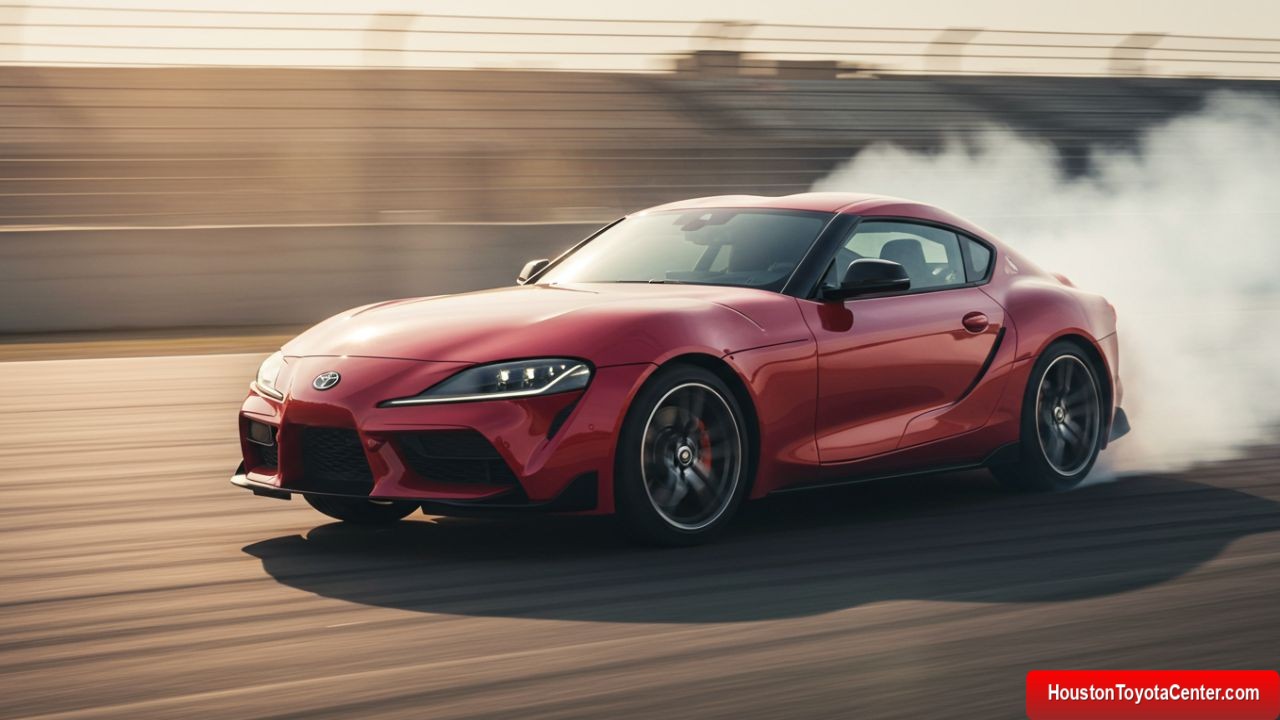The Toyota GR Supra, a name synonymous with performance and precision, has returned to reignite the passion of driving enthusiasts worldwide. Born from Toyota’s Gazoo Racing (GR) division, the fifth-generation Supra (A90/J29) blends cutting-edge engineering with a legacy of motorsport DNA. While its straight-six engine and sleek design draw immediate attention, its true prowess shines on the track. This article dives deep into the secrets behind the GR Supra’s lap time performance, exploring its mechanical brilliance, aftermarket potential, and driver techniques that transform it into a track-day dominator.
1. The Heart of the Machine: Engine & Power Delivery
At the core of the GR Supra lies its BMW-sourced B58 3.0L turbocharged inline-six engine, producing 382 hp and 368 lb-ft of torque in its latest iteration. This engine’s linear power delivery and broad torque curve make it a formidable force on straights and exits.
Key Features:
- Twin-Scroll Turbocharger : Minimizes turbo lag for instant throttle response.
- Direct Injection & Variable Valve Timing : Optimizes fuel efficiency and power across RPM ranges.
- Overboost Function : Temporarily increases torque under acceleration for overtaking or corner exits.
Track Advantage :
The B58’s ability to maintain peak torque from 1,800 RPM ensures rapid acceleration out of corners, reducing lap times. On circuits like Laguna Seca, this translates to 0.3–0.5 seconds saved per corner exit.
FREE: Quickly identify and understand problems with your vehicle 🚘
CLICK HERE2. Chassis & Suspension: Precision Handling
The GR Supra’s chassis is a masterpiece of balance, with a 50:50 weight distribution and a rigid aluminum-clad body. Its adaptive suspension system adjusts damping rates in real time, offering comfort on the street and razor-sharp handling on the track.
Track-Tuned Setup:
- Front Strut/Double-Joint Rear Suspension : Enhances stability during high-speed cornering.
- Active Differential : Distributes torque between rear wheels for optimal grip mid-corner.
- Variable Sport Steering : Sharpens turn-in response without sacrificing stability.
Aftermarket Upgrades for Track Days:
| Component | Upgrade | Benefit |
|---|---|---|
| Coilovers | KW V3 or Ohlins DFV | Adjustable damping for track stiffness |
| Sway Bars | Whiteline Adjustable | Reduces body roll |
| Bushings | Polyurethane (e.g., Powerflex) | Eliminates flex, improves precision |
3. Aerodynamics: Cutting Through the Air
The GR Supra’s aggressive styling isn’t just for show. Its functional aerodynamics generate 100 lbs of downforce at 150 mph, pressing the car into the tarmac for enhanced grip.
Key Aero Features:
- Active Front Splitter : Adjusts to balance drag and downforce.
- Rear Ducktail Spoiler : Increases rear-wheel traction during acceleration.
- Underbody Diffusers : Smooths airflow beneath the car to reduce turbulence.
Track Testing Insights :
At the Nürburgring Nordschleife, a stock GR Supra recorded 7:30.8 —a time comparable to Porsche Cayman GT4. With aero upgrades (e.g., APR Performance GT wings), lap times drop by 1.5–2.0 seconds by improving high-speed stability.
4. Tires: The Contact Patch Matters
Tires are the unsung heroes of track performance. The GR Supra’s stock Michelin Pilot Super Sport tires offer excellent grip, but track-focused rubber unlocks its full potential.
Top Tire Choices for Track Days:
- Michelin Pilot Sport Cup 2 : Balances wear and grip.
- Bridgestone Potenza S007A : Superior wet/dry performance.
- Toyo R888R : Extreme grip for dry conditions.
Tire Pressure Strategy :
- Optimal Range : 32–35 PSI (front), 30–33 PSI (rear).
- Lower pressures increase contact patch, but excessive drop risks overheating.
5. Driving Techniques: Mastering the Machine
Even the best hardware requires skill to maximize. Here’s how to shave seconds off your lap times:
1. Braking Points :
- Threshold braking: Apply full brake pressure just before ABS intervention.
- Trail braking: Carry brake pressure into corners to rotate the car.
2. Line Selection :
- Late apexing: Prioritize exit speed over entry speed on tight corners.
- Use curbs: Ride apex curbs to shorten the racing line.
3. Weight Transfer :
- Smooth throttle inputs prevent rear-wheel spin.
- Heel-toe downshifting maintains balance during deceleration.
6. Competitor Comparison: How Does the GR Supra Stack Up?
| Model | Lap Time (Nürburgring) | Power-to-Weight | Price |
|---|---|---|---|
| Toyota GR Supra 3.0 | 7:30.8 | 4.5 lb/hp | $55,000 |
| Porsche 718 Cayman GT4 | 7:23.0 | 6.7 lb/hp | $100,000+ |
| Chevrolet Corvette C8 | 7:26.0 | 6.2 lb/hp | $65,000 |
Verdict : The GR Supra punches above its weight, offering near-supercar performance at a fraction of the cost.
7. Real-World Lap Times & Tuning
Notable Track Records :
- ** VIR Full Course**: 2:54.3 (stock) vs. 2:48.1 (modified).
- ** Spa-Francorchamps**: 2:22.5 (stock) vs. 2:17.9 (with aero/tires).
Top Modifications for Lap Time Gains :
- Engine Tuning : ECU remap (+40 hp) and downpipe ($1,200).
- Brake Upgrade : Endless MX72 pads and slotted rotors ($800).
- Weight Reduction : Remove interior panels (-150 lbs, $500).
Conclusion: A Track-Day Titan
The Toyota GR Supra’s blend of raw power, precision engineering, and aftermarket versatility makes it a track-day superstar. By optimizing setup, tires, and driving technique, even novice drivers can achieve jaw-dropping lap times. Whether stock or modified, the GR Supra proves that Toyota’s return to performance is nothing short of legendary.


Leave a Reply